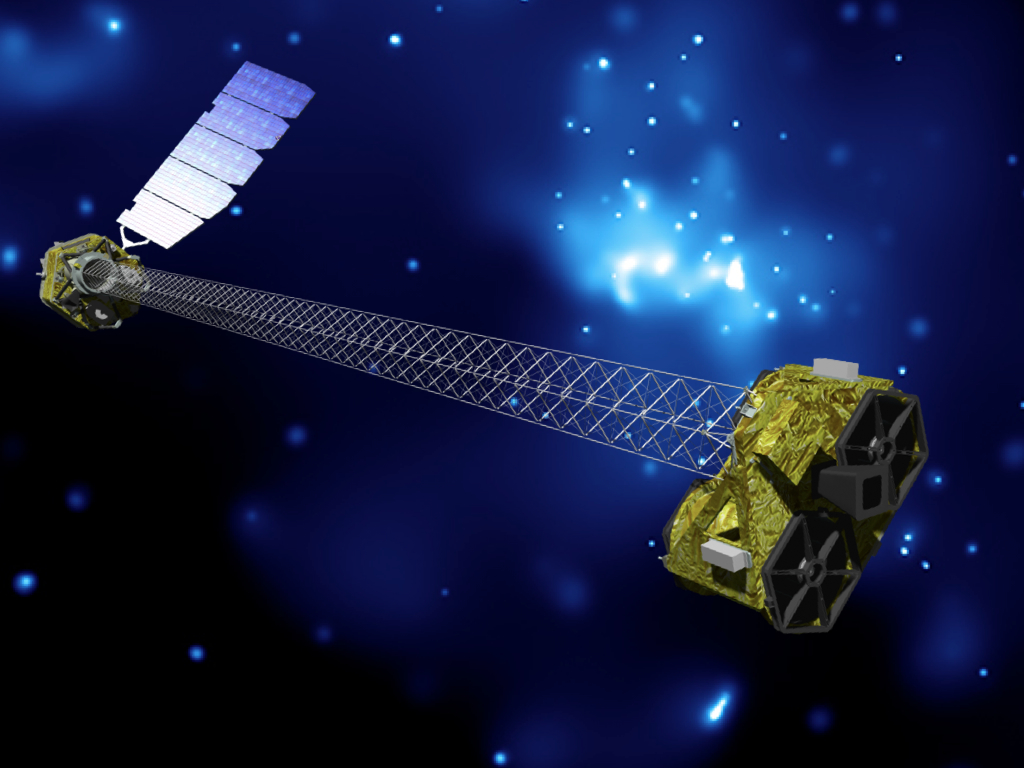NASA to Hunt Black Holes with New Space Telescope

After months of delay, NASA's newest space telescope is just two weeks away from launching on an ambitious mission to seek out the universe's black holes and investigate their mysterious origins.
The space agency's Nuclear Spectroscopic Telescope Array (NuSTAR) is slated to launch June 13 from Kwajalein Atoll in the Marshall Islands. The X-ray space telescope will ride into orbit on a Pegasus XL rocket from Orbital Sciences, which is designed to launch in midair from a rocket-carrying aircraft. The mission has been awaiting launch since March, when NASA delayed its liftoff pending a review of the rocket.
NuSTAR will study how black holes form and grow, and how these processes affect their host galaxies, said Fiona Harrison, principal investigator of the NuSTAR mission at the California Institute of Technology (Caltech) in Pasadena, Calif.
"It's the very first telescope to focus high-energy X-rays," Harrison told reporters today (May 30) in a news briefing. "This will enable NuSTAR to study some of the hottest, densest and most energetic phenomena in the universe, for example black holes and explosions of massive stars."
NuSTAR will examine these objects with unprecedented sensitivity by studying light in the high-energy, short-wavelength X-ray range. Images beamed back from NuSTAR will be 10 times sharper than current X-ray observatories in orbit, Harrison said.
"It's opening up a new window on the universe," said Paul Hertz, director of the astrophysics division at NASA Headquarters in Washington, D.C. "Although we are going into this mission with many scientific questions, like all of our NASA missions, we're going to find unexpected things out there that will lead us to questions and answers that we aren't even anticipating at this time." [Gallery: NASA's Black Hole Hunting Space Telescope]
NuSTAR was originally scheduled to launch in March, but was delayed after NASA decided more time was needed to review software on the Pegasus XL rocket.
Get the Space.com Newsletter
Breaking space news, the latest updates on rocket launches, skywatching events and more!
The delay meant that the mission, which carried an initial price tag of about $165 million, increased by several million dollars, or a few percent, Hertz said. NuSTAR's science missions, however, were not impacted by the extra time required for the rocket's software review.
NuSTAR will examine the innermost regions of black holes, where hot material is accelerated close to the speed of light, boosting emissions into the high-energy X-ray range, Harrison explained.
In these areas, light is bent and severely distorted by the black hole's strong gravity. By studying atoms in the X-ray band as they are drawn into the black hole, researchers will be able to see the effects of a black hole's intense gravity.
These observations will let scientists watch as a black hole feeds and grows, and will offer them a glimpse of the environment surrounding these cosmic giants, said Daniel Stern, NuSTAR project scientist at NASA's Jet Propulsion Laboratory in Pasadena, Calif.
But NuSTAR is also designed to study other intriguing phenomena in our galaxy and the universe, Stern added, including the remnants of massive stars that end their lives in violent supernova explosions, high-speed particle jets, ultra-dense neutron stars, and coronal mass ejections and flares from the sun.
The NuSTAR telescope falls under NASA's Small Explorer mission category, and is led by Caltech and managed by the agency's Jet Propulsion Laboratory.
You can follow SPACE.com staff writer Denise Chow on Twitter @denisechow. Follow SPACE.com for the latest in space science and exploration news on Twitter @Spacedotcom and on Facebook.
Join our Space Forums to keep talking space on the latest missions, night sky and more! And if you have a news tip, correction or comment, let us know at: community@space.com.

Denise Chow is a former Space.com staff writer who then worked as assistant managing editor at Live Science before moving to NBC News as a science reporter, where she focuses on general science and climate change. She spent two years with Space.com, writing about rocket launches and covering NASA's final three space shuttle missions, before joining the Live Science team in 2013. A Canadian transplant, Denise has a bachelor's degree from the University of Toronto, and a master's degree in journalism from New York University. At NBC News, Denise covers general science and climate change.